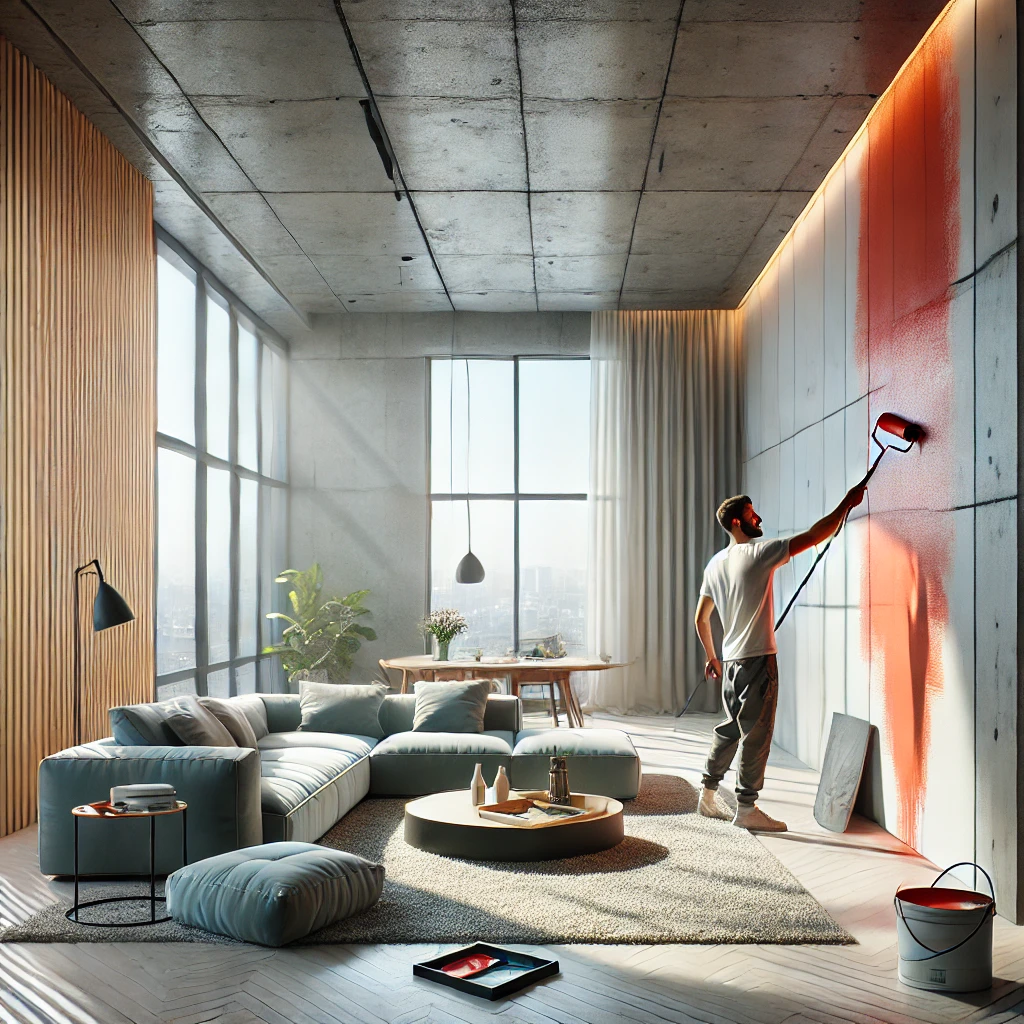The Art of Plastering: A Beginner’s Guide to Smooth, Durable Walls
Plastering is one of the oldest building techniques in the world. For centuries, skilled craftsmen have used plaster to protect and decorate interior walls, creating surfaces that are not just structurally sound but also visually appealing. Whether you’re a DIY enthusiast looking to tackle your first plastering project or a homeowner curious about the process, this blog post will guide you through the basics and help you achieve that flawless, smooth finish.
1. What is Plastering?
Plastering involves applying a mixture of gypsum, lime, or cement (depending on the type of plaster) to walls and ceilings to create a smooth surface. This mixture hardens and bonds to the underlying structure, adding durability and a polished look. Plaster has been used for centuries in construction due to its versatility, fire resistance, and ease of application.
Why Choose Plaster Over Other Finishes?
- Durability: Properly applied plaster can last for decades without cracking or peeling.
- Aesthetics: The smooth finish of plaster often feels more luxurious and refined compared to basic drywall.
- Customization: Ornamental plasterwork and decorative moldings can add a timeless charm to interiors.
2. Tools and Materials You’ll Need
Before you dive into a plastering project, gather the right tools to ensure a safe and efficient job:
- Plaster mix (gypsum-based, lime-based, or cement-based depending on your needs)
- Bucket or mixing container
- Drill with mixing paddle (or a manual whisk for smaller projects)
- Hawk (flat, square tool for holding plaster)
- Trowel (for applying and smoothing the plaster)
- Plasterer’s float (used in finishing and smoothing)
- Plasterer’s sponge or brush (for finishing touches)
- Protective gear (gloves, goggles, dust mask)
Ensuring you have high-quality tools makes a world of difference. A sturdy, rust-free trowel and proper mixing equipment prevent clumping and uneven application.
3. Preparing Your Surface
Preparation is key to a successful plastering job. Here are a few steps to set yourself up for success:
- Clean and Dry Surface: Remove any flaking paint, wallpaper residue, or dust. Plaster won’t adhere well to dirty or damp walls.
- Check for Damages: Repair cracks or holes with filler before applying new plaster.
- Apply a Primer/Key: If you’re plastering over a smooth surface like painted drywall, lightly score or sand the area to help the plaster adhere. You can also apply a bonding agent or a thin “scratch coat” of plaster as a base layer.
4. Mixing and Applying the Plaster
1. Mix the Plaster Correctly
Follow the manufacturer’s instructions on the packaging. Typically, you’ll add plaster powder to water in a clean bucket. Use a drill with a mixing paddle for larger quantities, ensuring there are no lumps in the mixture. Aim for a consistency similar to thick pancake batter.
2. First Coat (Undercoat)
Use your hawk to hold the plaster and your trowel to apply a thin, even layer onto the wall. Work in small, manageable sections. The first coat should be roughly 2–3 mm thick.
3. Smooth and Level
After applying the plaster, use your trowel in long, sweeping motions to smooth out any ridges or bumps. Keep your trowel clean by occasionally wiping it on the edge of the hawk.
4. Second Coat (Finish Coat)
Once the first coat is firm to the touch (not fully dry), apply a second, thinner coat of plaster, about 1–2 mm thick. This coat will refine the surface and eliminate any remaining imperfections.
5. Finishing Touches
When the plaster starts to set, gently mist the surface with water and smooth it again using a clean trowel or a plasterer’s float. This process helps achieve that flawless, mirror-like finish.
5. Drying and Curing
Allow the plaster to dry thoroughly before painting or decorating. Depending on the thickness of the plaster and environmental factors (like humidity), this can take anywhere from a few days to a week or more. It’s important to let the plaster fully cure—painting over damp plaster can lead to peeling and discoloration down the line.
6. Common Mistakes to Avoid
- Skipping Surface Prep: Failing to clean and prime your walls can cause the plaster to crack or fall off later.
- Overworking the Plaster: Excessive troweling or adding too much water can weaken the plaster.
- Rushing the Drying Process: Turning up the heat or using fans to “speed up” drying can cause cracks to form.
7. Final Thoughts
Plastering may seem intimidating at first, but with the right tools, materials, and preparation, you can achieve professional-looking results—even as a beginner. Whether you’re refreshing a living room wall or restoring an older property to its former glory, plaster provides a durable, attractive finish that stands the test of time.
Ready to get started? Gather your supplies, prepare your workspace, and take it one step at a time. If you’re unsure about a more complex project or a large surface area, don’t hesitate to consult a professional plasterer to ensure lasting results.
Have questions about plastering techniques or need more guidance? Leave a comment below or contact our team for personalized advice on your next plastering project!
